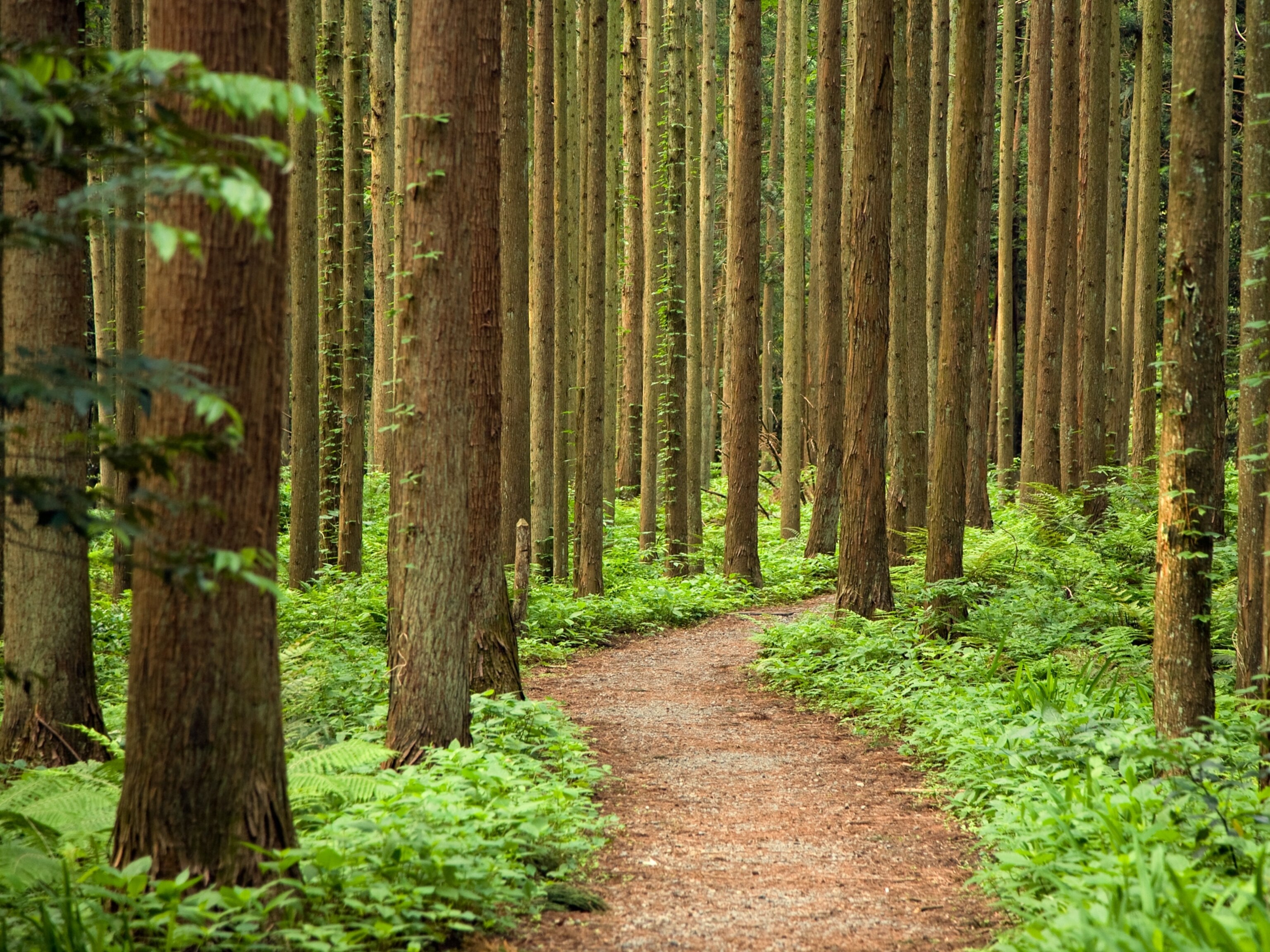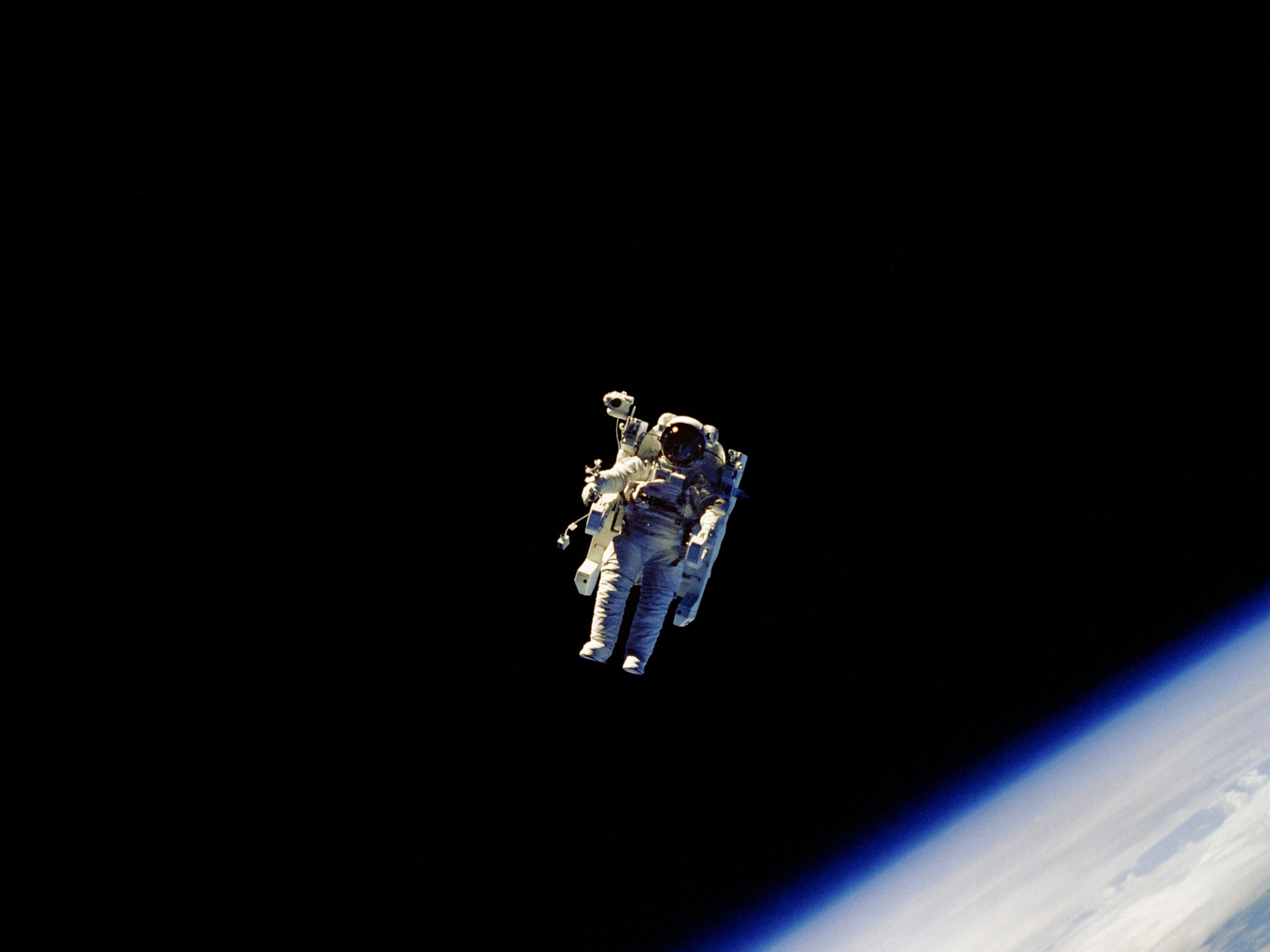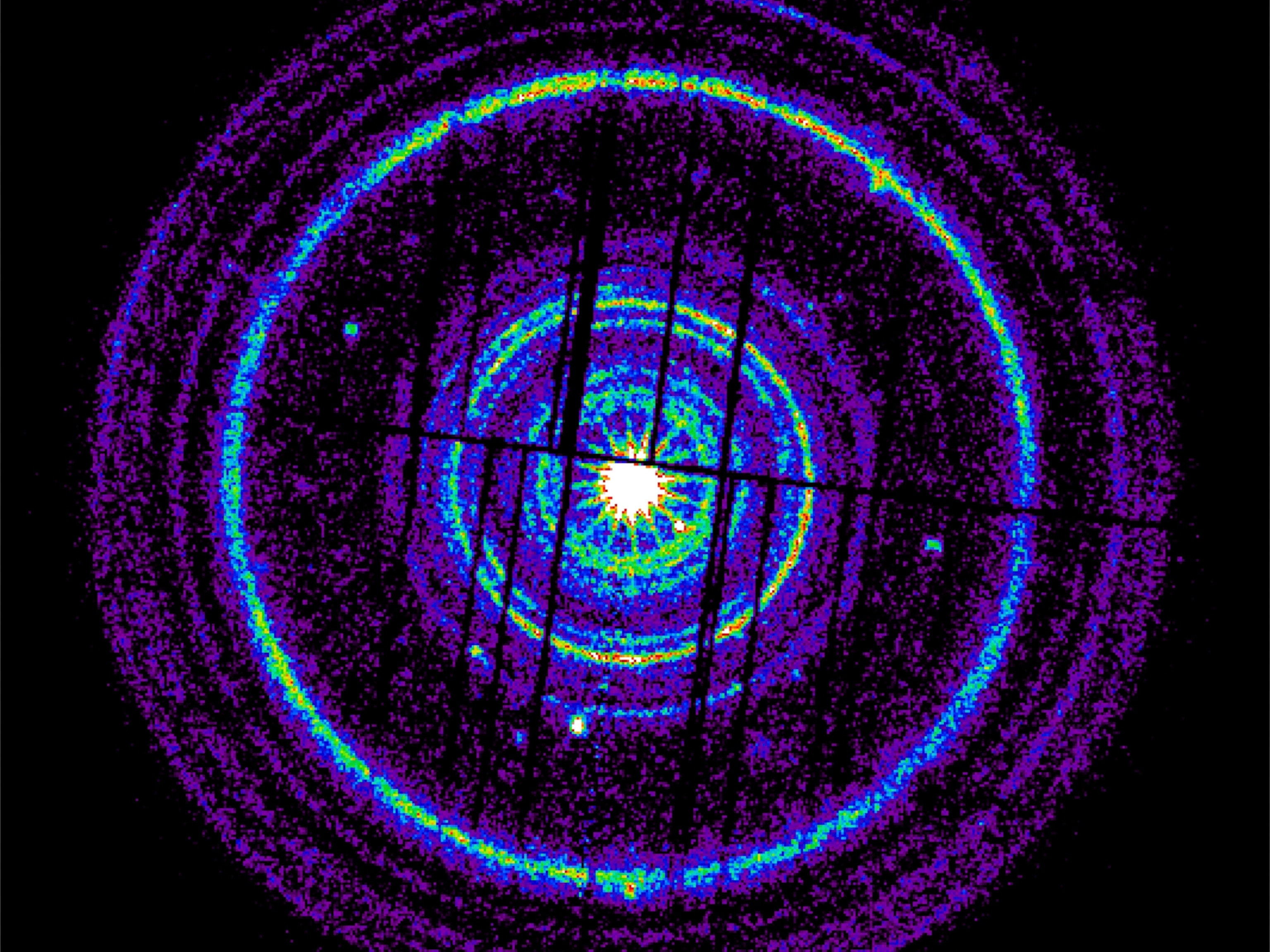
1,200-Year-Old Cosmic Blast Captured in Japanese Trees
Radioactive atoms in cedars hint at mysterious astronomical event.
A surplus of radioactive atoms in Japanese trees may point to an unrecorded astronomical event that showered Earth with cosmic rays about 1,200 years ago.
Cosmic rays are subatomic particles that are flung through space by various astronomical events, including supernovae and "superflares"—more powerful versions of solar flares that happen on other stars.
Earth is constantly being bombarded by a relatively steady amount of cosmic rays. When the high-energy particles collide with atoms in our atmosphere, they shake loose subatomic particles called neutrons.
Free-floating neutrons can then attach to atmospheric nitrogen, creating carbon 14—a heavier, radioactive version of the element.
Carbon 14 gets incorporated into trees and plants during photosynthesis and into the bodies of animals that eat the vegetation. Scientists can trace its rate of decay in wood and bone to tell the ages of ancient remains.
(Related: "Radiation in Teeth Can Help Date, ID Bodies, Experts Say.")
But in a recent study of annual growth rings in two cedar trees from Yaku Island in southern Japan, researchers were surprised to discover a 1.2 percent spike in the amount of carbon-14 between the years A.D. 774 and 775.
The annual variation for carbon 14 is about 0.05 percent, which means a 1.2 percent increase is more than 20 times higher than normal—a likely signal of a massive cosmic blast.
Blast Also Seen in Ice?
The finding is a puzzle, because no historical records exist for a supernova or superflare occurring that year, even though such events would have been visible to people living at the time, said study leader Fusa Miyake of Japan's Nagoya University.
A superflare, for example, would have flooded Earth with charged particles and triggered unusually vivid auroras.
And if a supernova was responsible for the extra cosmic rays, Miyake estimates that the star explosion would have to have occurred within a radius of 650 light-years from Earth—close enough to have created a new "star" in the sky that would have been visible even during daylight.
(Also see "New Supernova Found 'Next Door'—Getting Brighter.")
Still, the idea that a cosmic event happened near Earth in the 770s may be supported by another study.
In 2008, a different group of Japanese researchers detected a spike in the radioactive element beryllium 10 in ice core samples from Antarctica.
Like carbon 14, beryllium 10 is produced by collisions of cosmic rays with atoms in the atmosphere. The radioactive atoms then attach to airborn particles, which can get incorporated into rainfall or snowfall, Miyake explained.
"Although we cannot say with certainty that the [beryllium 10] peak in the ice core occurred in A.D. 775, it is possible that the two peaks have the same cause," Miyake and her team write in their paper.
More Tree Rings Needed
Using tree rings to pinpoint cosmic events is a well-established technique, noted Kevin Anchukaitis, a tree-ring expert at Columbia University's Lamont-Doherty Earth Observatory.
The method "goes back to the 1960s, when the use of radiocarbon was being developed and applied to archaeological and geological research," he said.
For example, in 1995 geoscientist Paul Damon observed a prolonged spike in giant sequoia trees potentially corresponding to a supernova recorded in A.D. 1006.
(Related: "Over 200 Years of Hurricane Data Recorded in Trees, Study Says.")
To bolster their case, Miyake's team will have to verify their findings in other long-lived tree species, such as the giant sequoia or the bristlecone pine, Anchukaitis said.
"We'd expect these [supernovae and superflares] to be global events," he added, "that would appear in the radiocarbon of any long tree-ring chronology around the world."
The new cosmic ray study was published online Sunday by the journal Nature.





